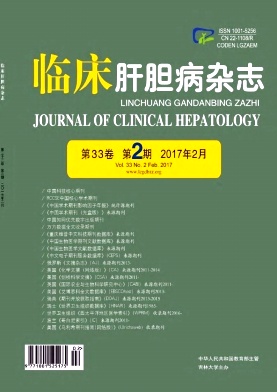|
[1]ZOU XF,WU GL,WANG W,et al.Bile and blood bacterial flora and its antibiotic sensitivity in patients with acute cholangitis combined with choledocholithiasis[J/CD].Chin J Exp Clin Infect Dis:Electronic Edition,2015,9(1):91-95.(in Chinese)邹雪飞,吴广利,王伟,等.胆石症合并急性胆管炎患者胆汁及血液病原菌培养及药敏分析[J/CD].中华实验和临床感染病杂志:电子版,2015,9(1):91-95.
|
|
[2]ZHOU CM,HU BJ,LYU Y.Mohnarin annual report 2010:distribution of bile culture-derived pathogens and surveillance of drug resistance[J].Chin J Nosocomiol,2012,22(1):18-22.(in Chinese)周春妹,胡必杰,吕媛.2010年度卫生部全国细菌耐药监测网报告:胆汁培养病原菌的构成及耐药性监测[J].中华医院感染学杂志,2012,22(1):18-22.
|
|
[3]ZHAO DQ,WU YF,ZHU C,et al.Biliary bacteriology and drug resistance in patients with biliary tract infection in Jinshan area[J].Chin J Dig,2010,30(8):522-524.(in Chinese)赵登秋,邬叶锋,朱成,等.上海市金山地区胆道感染患者胆汁细菌感染及耐药分析[J].中华消化杂志,2010,30(8):522-524.
|
|
[4]ASWAD MG,DENNISON AR,NEAI CP,et al.Biliary stenting for benign and malignant obstructive jaundice:safe use of extended stent-change intervals[J].Surg Laparosc Endosc Percutan Tech,2014,24(4):385-390.
|
|
[5]BAE WK,MOON YS,KIM JH,et al.Microbiologic study of the bile culture and antimicrobial susceptibility in patients with biliary tract infection[J].Korean J Gastroenterol,2008,18(9):1248-1251.
|
|
[6]KUJAWSKI K,STASIAK M,RYSZ J,et al.Qualification for endoscopic retrograde cholangiopancreatography in the diagnosis and treatment of extrahepatic cholestasis caused by choledocholithiasis[J].Arch Med Sci,2015,11(6):1213-1216.
|
|
[7]BORAHMA M,AFIFI R,BENELBARHDADI I,et al.Endoscopic retrograde cholangiopancreatography in ruptured liver hydatid cyst[J].Indian J Gastroenterol,2015,34(4):330-334.
|
|
[8]BOEHLER ML,ROBERTS N,SANFEY H,et al.Do surgeons and gastroenterologists describe endoscopic retrograde cholangiopancreatography differently?a qualitative study[J].J Surg Educ,2016,73(1):66-72.
|
|
[9]WANG JH,SU XM,GAO G,et al.Clinical characteristics of multiple ERCP procedures in elderly patients aged over 80[J].JClin Hepatol,2015,31(7):1120-1122.(in Chinese)王继恒,苏锡铭,高革,等.80岁以上患者多次行经内镜逆行胰胆管造影的临床特点分析[J].临床肝胆病杂志,2015,31(7):1120-1122.
|
|
[10]JIANG SJ,WANG YG,LI QM,et al.Role of therapeutic endoscopic retrograde cholangiopancreatography in treatment of pancreaticobiliary diseases[J].J Clin Hepatol,2016,32(7):1360-1363.(in Chinese)蒋圣军,王永光,李其美,等.治疗性经内镜逆行胰胆管造影在胆胰疾病治疗中的应用[J].临床肝胆病杂志,2016,32(7):1360-1363.
|
|
[11]LIANG JR,SHI DH,ZHANG C,et al.Clinical value of endoscopic retrograde cholangiopancreaphy in elderly patients with common bile duct calculi and its safety[J].Clin J Med Offic,2015,43(3):270-273.(in Chinese)梁君蓉,石德红,张冲,等.高龄胆总管结石患者内镜逆行胰胆管造影治疗的临床价值及安全性[J].临床军医杂志,2015,43(3):270-273.
|
|
[12]MENG QL,HUANG S,FAN Z,et al.Benign and malignant biliary obstruction caused by biliary infection bacteria distribution and drug resistance status[J].Chin J Dig Endosc,2010,27(12):649-651.(in Chinese)孟庆玲,黄曙,范志,等.胆道良恶性梗阻致胆道感染的菌群分布与耐药状况[J].中华消化内镜杂志,2010,27(12):649-651.
|







 DownLoad:
DownLoad: